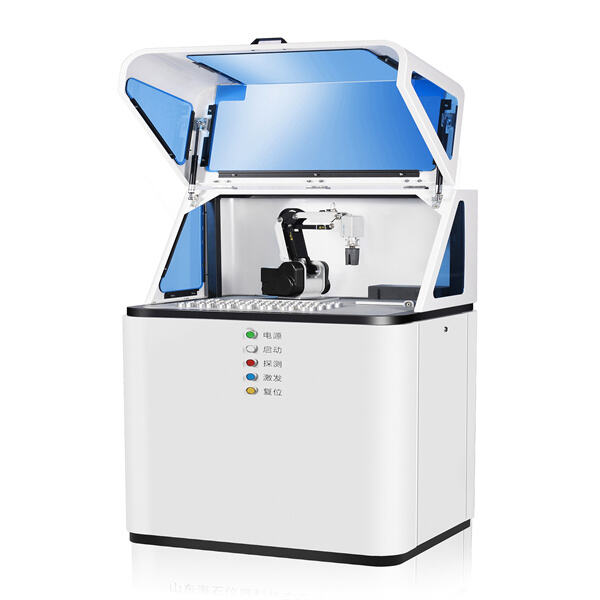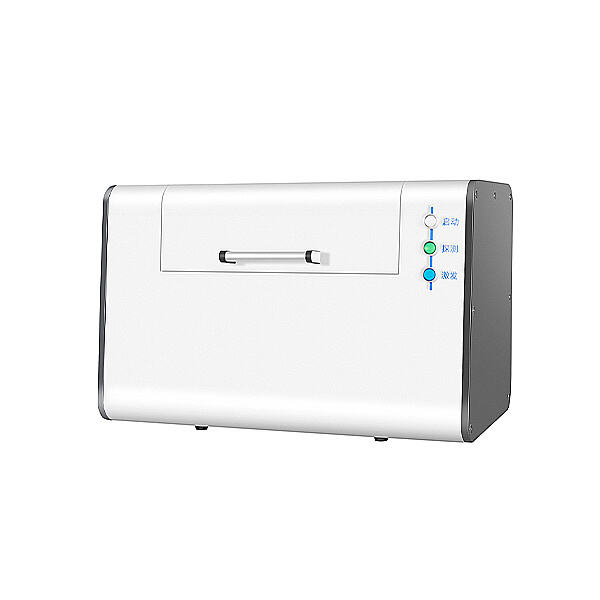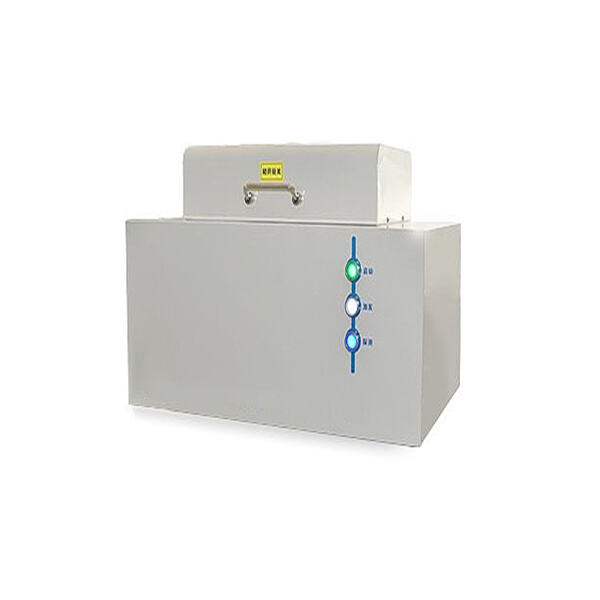ການສຶກສາວัດຖຸເກົ່າຫຼາຍ, ທີ່ໃຊ້ອຸປະກອນວິທະຍາศาสตร์ທີ່ຄົບຮອບແລະມັກຈະເປັນຄືກັບ x-ray fluorescence (XRF) ແມ່ນສ່ວນໜຶ່ງຂອງສິ່ງທີ່ເຈົ້າສາມາດເຫັນໄດ້ຜ່ານ XRF ອາເຄໂລຢິສ. ມັນມີຄ່າພຽງແຕ່ໃຫ້ນັກວິທະຍາສາທີ່ສຶກສາຄວາມແປ່ງຂອງມະນຸດທີ່ໄປຫາຍກ່ອນທີ່ເຮົາຈະມີຢູ່, ແລະ ຄວາມຮູ້ທີ່ເຂົາສົ່ງຄືນມາຊ່ວຍໃຫ້ເຮົາເຂົ້າໃຈໂລກຂອງພວກເຮົາມື້ນີ້. ໃນບົດຄວາມນີ້, ພວກເຮົາຈະເບິ່ງເຫັນ 5 ວິທີທີ່ XRF ຢູ່ໃຫ້ຄວາມລັບຂອງຄວາມແປ່ງທີ່ໄປຫາຍ, ເພື່ອໃຫ້ເຮົາເຂົ້າໃຈການສຶກສາຂອງພຣະຍາທີ່ມີຕໍ່ວັດທະນະທຳຂອງພວກເຂົາ.
ເຈົ້າສາມາດຄິດໄວ້ວ່າ X-ray fluorescence (XRF) ແມ່ນຄືກັບຄົນທີ່ມີຄືນິດທີ່ສັນຍາວ່າເຈົ້າສາມາດເຫັນໄດ້ເປົ່າວ່າວัດຖຸເຫຼົ່ານັ້ນເຮັດມາຈາກເcci່ງ - ບໍ່ຕ້ອງເສຍຄວາມເສຍແຫ່ງວັດຖຸເຫຼົ່ານັ້ນ. ອີງຕາມວິທີທີ່ມັນເກີດຂຶ້ນແມ່ນຄືກັບ: ນັກສຶກສາໃຊ້ x-rays ທີ່ແຂງແລະສົ່ງໄປຫາວັດຖຸ, ແລະ ການສົ່ງນັ້ນເຮັດໃຫ້ມີການສົ່ງອອກ x-rays ຕົວໃໝ່. x-rays ຕົວໃໝ່ (secondary x-rays) ນີ້ເຫຼົ່ານັ້ນສາມາດເຫັນຄວາມຮູ້ທີ່ມີຄ່າຫຼາຍກ່ຽວກັບວັດຖຸ.
ສະຕຸ້ງທີ່ສິ່ງເປົ້າໄດ້ຖືກຊັບຂຶ້ນມາຈາກ ມັນສາມາດຖືກວິເຄາະໄດ້ເພື່ອຕິດຕາມຫາທີ່ມາຂອງມັນ, ອາຍຸຂອງມັນແລະວັນນາທີ່ຜູ້ປະສົ້ງມັນ. ການສົ່ງສິ່ງນີ້ຈະຊ່ວຍໃຫ້ພວກເຮົາຄົ້ນพบເພີ່ມຂຶ້ນກ່ຽວກັບຕົວພວກເຮົາเองແລະທີ່ມາຂອງພວກເຮົາ. ອາຄີໂລໂກິສຕ໌ທົ່ວໂລກຕົກລົງໃນປະຈຸບັນມີວິທີ່ບໍ່ຫຼືອມຫຼີມ, ສັງຄານແລະມີຄວາມສຳເລັດສູງສຳລັບການສຶກສາ biodeterioration ຂອງອົງປະກອບອາຄີໂລໂກິກເກົ່າ ທີ່ໃຊ້ເทັກນົອລົກ XRF ບໍ່ມີຄວາມສິ່ງທີ່ຈະເສຍແຫຼັງສິ່ງເຫຼົ້າທີ່ມີຄ່າທີ່ສາມາດຖືກບັນທຶກໄປໄດ້ສຳເລັດ.
ໜຶ່ງໃນສິ່ງທີ່ນຳກ້າຍຂອງ XRF ເປັນວ່າ ທ່ານສາມາດໃຊ້ມັນເພື່ອຕັດສິນໄດ້ວ່າສິ່ງເກົ່າແມ່ນມາຈາກບ່ອນໃດ ຕາມລາຍລະອຽດ ຫຼື ລາຍລະອຽດໃນສະຕຸ້ງ. ດຳເນີນ & ມິນแรລ໌ຂອງປະເພດຕ່າງໆມີຢູ່ໃນເຂດຕ່າງໆແລະເມືອງທົ່ວໂລກ. ປະເພດທີ່ເປັນ ຄຸປເປັນຕົວຢ່າງ ຈະມີລາຍລະອຽດເຄມີກາລູ້ທີ່ບໍ່ເທົ່າກັບກັນ ຖ້າມັນມາຈາກສ່ວນຕ່າງໆຂອງປະເທດທິໝົນ ຫຼື ເຖິງແມ່ນຈາກເຂດຂົ້າເມືອງໃນຈີນ. ນັ້ນແມ່ນສິ່ງທີ່ XRF ຢູ່ສາມາດກວດກາ: ການແຕກຕ່າງ.

ປົ້ນຕົວຢ່າງ, ອຸບັດທະເມືອງໃນອາຍຸການແຫລ່ງສິ່ງຂອງເກົ່າໃນອາຄຳເກີດໄດ້ຖືກຮັບຜົນພາບຫຼາຍຈາກວິທີການທີ່ພວກເຂົາຊຸມຊົນເກົ່າໃນພື້ນທີ່ຕົ້ນທະເລີ່ມ. ການໃຊ້ XRF ເພື່ອສຶກສາສິ່ງອານເມືອງເກົ່າຂອງອາຄຳເກີດ, ພວກເຮົາສາມາດເຫັນທາງທີ່ຂອງການຄ້າແລະການປະສານກັນຂອງວັນນະຄຸນທີ່ໄດ້ສຳເລັດໃຫ້ແຫຼ່ງທີ່ຕ່າງໆ ຕື້ມາໃຫ້ກັບການແຫລ່ງເມືອງຂອງອາຄຳເກີດໄດ້. ຖ້າພວກເຮົາເຂົ້າໃຈການປະສານກັນນີ້, ພວກເຮົາຈະເຫັນວ່າວັນນະຄຸນຂອງພວກເຮົາໄດ້ປະສານແລະຮັບຜົນພາບຫຼາຍເທົ່າໃດ ມາ貫ທົ່ວປະຫຼາດ.

ສຸດທ້າຍ, XRF ບໍ່ສາມາດໃຫ້ຄວາມຮູ້ເພີ່ມຂຶ້ນກ່ຽວກັບວິທີການປະຕິບັດງານເມືອງທີ່ປ່ຽນແປງໄປตามເວລາ. ມື້ຖືກນຳໃຊ້ຢ່າງຫຼາຍໃນອາຟັກເຊົ້າເຊັ່ນວັດຖຸເມືອງຈະເผົ່າໂສິດໃຫ້ນິກາຍສາດຄວາມເປັນມາຂອງເทັກນິໂຄງແລະວິທີການທີ່ເຫຼົ່າອາຟັກເຊົ້າເຫຼົ່ານັ້ນເລີ່ມມາ. ນີ້ແມ່ນສຳຄັນເພາະມັນໃຫ້ພວກເຮົາຄວາມຮູ້ເພີ່ມຂຶ້ນກ່ຽວກັບວິທີການຜະລິດອຸປະກອນໃນປະຫຼວງຄວາມເປັນມາຂອງມະນຸດແລະວິທີການທີ່ສັນຍາການພັດທະນາທີ່ສັນຍາໃຫ້ມະນຸດພັດທະນາຄະແນນິກາຍສາດໃນການຈັດການເມືອງທີ່ພວກເຂົາຍັງບໍ່ມີຄວາມຮູ້.

Nanyang JZJ ເປັນໜຶ່ງໃນບໍ່ທີ່ສຳຄັນທີ່ສຸດໃນການວິจາຍ XRF ແລະ ການຄົ້ນຄວ້າທີ່ເພີ່ມຂຶ້ນນີ້ຕ້ອງການການສັງຄົມຈາກພວກເຂົາ. ອຸປະກອນສະແກນ XRF ຂອງພວກເຂົາໄດ້ຖືກນຳໃຊ້ໂດຍນິກາຍສາດອາຟັກເຊົ້າທຸກທີ່ເພື່ອຄົ້ນຄວ້າອາຟັກເຊົ້າโบราณແລະຮູ້ເພີ່ມຂຶ້ນກ່ຽວກັບຄວາມເປັນມາຂອງພວກເຮົາ. ຕຳຫຼວດການພັດທະນາຂອງນິກາຍສາດອາຟັກເຊົ້າ ແລະ ການຊ່ວຍເຫຼືອຈາກເທັກນິໂຄງ XRF, ພວກເຮົາຈະສາມາດເຜີຍແຜ່ຄວາມຮູ້ທີ່ນ່າ兴ກ່ຽວກັບວັນທີ່ແລະຄວາມເປັນມາຂອງພວກເຂົາ.
ສິນຄ້າ x ray fluorescence archaeology ປະມຸກໃຊ້ງານຫຼາຍໃນອຸດົມສາດເມື່ອງແລະອຸດົມສາດເซຣາມິກ, ເປັນຕົ້ນວ່າ ອຸດົມສາດຂົນສ້າງ, ຄີມິກ, ແຮງງານ ແລະອຸດົມສາດອື່ນໆທີ່ເປັນສ່ວນປະສົມ. ໂດຍການນຳສົ່ງສິນຄ້າໄປຕ່າງປະເທດ, ສະຖານະບິນຂອງບໍລິສັດໃນໂຮງຮຽນຫຼາຍໆຂອງປະເທດ, ເຄື່ອງມືກວດສອບຄູນພາບຂອງປະເທດ ແລະ ລັບໂຮງຄົ້ນຄວ້ນ ແລະ ມີການສົ່ງສິນຄ້າໄປຫາຫົວໜ້າຜູ້ຜະລິດເຄື່ອງມືທີ່ຕ້ານໄຟ ແລະ ບໍລິສັດເหลືອນເປັນຕົ້ນ. ທີ່ຢູ່ຂອງການນຳສົ່ງ: ພວກເຮົາສັງຄັບກັບການນຳສົ່ງໂດຍເສັ້ນທະເລ, ນຳສົ່ງໂດຍເຮືອບີນ, ນຳສົ່ງດ້ວຍຄວາມเรົ້າແລະ ນຳສົ່ງໂດຍເສັ້ນໄຟ.
x ray fluorescence archaeology ການລົງທຶນທີ່ເປັນຄົນທີ່ມີຄວາມກ້າວໜ້າ, ການພັດທະນາເทັກນິກ ແລະ ການປຸກຄົນຄູນພາບສິນຄ້າ. ບໍລິສັດໄດ້ຜ່ານການສັນຍາ ISO9001, CE, SGS ແລະອື່ນໆ. ບໍລິສັດຍັງມີລິສັງ CMC ການປະຕິບັດເຄື່ອງມືວັດທະມົນຊາດ ແລະ ມີສິດທິການເຂົ້າໃຈທີ່ເປັນອິດສະຫຼະ ໃນອຸດົມສາດທີ່ຕ້ານໄຟ, ແລະ ມີການລົງທຶນຫຼາຍກວ່າ 50 ການສົ່ງເອກະສານ ແລະ ການສົ່ງເອກະສານ.
ພວກເຮົາແນະນ້ອຍຫຼາຍກັບສິນຄ້າ x ray fluorescence archaeology ຂອງພວກເຮົາເນື່ອງຈາກວ່າພວກເຮົາບໍ່ແມ່ນຫຼາຍກ່ຽວກັບວิศວະกรປະຕູທີ່ມີຄວາມຊື້້ມ ແຕ່ຍັງແມ່ນວິສວະກຣົມທີ່ອອກແບບ ທີ່ເຂົ້າໃຈລາຍລະອຽດແລະການເຮັດວຽກ. ພວກເຮົາມີຄວາມຮູ້ຫຼາຍໃນການສອບສວນອຸນຫະພູມສູງ ແລະສາມາດສະໜອງອຸປະກອນສອບສວນອຸນຫະພູມສູງທີ່ແປງໄປສຳລັບໂຄງການເພີ່ມ. ພວກເຮົາຍັງສະໜອງບໍລິການສະໜັບສະໜູນເລື່ອງທີ່ເกິດຂຶ້ນຈາກອຸນຫະພູມສູງແລະການສອບສວນຕົວຢືງ.
ສິນຄ້າຫຼັກທີ່ບໍລິສັດສະໜອງມາມີ x ray fluorescence archaeology ອັດຕະໂມັດສໍາລັບການວິເຄາະສະເພັກໂຕແລະການທົດສອບຮູບແບບສໍາລັບຜົນລົງທີ່ບໍ່ມີຮູບແບບ ແລະ ຜົນລົງເซຣີເມັກ ແລະ ສິນຄ້າອື່ນໆ ທີ່ມີເຄື່ອງຮ້ອງອຸນຫະພູມກາງແລະສູງ, ອຸປະກອນການລົງມືກັບຕົວຢືງ, ອຸນຫະພູມສູງ ເຫວັ່ນ, ແລະ ລິນນິງຂອງເຄື່ອງຮ້ອງອຸນຫະພູມສູງ, ພື້ນຖານຄວາມສາມາດ, ເຄື່ອງມືລັບ, ເຄື່ອງເຄື່ອງເຄື່ອງເຄື່ອງເຄື່ອງເຄື່ອງເຄື່ອງເຄື່ອງເຄື່ອງເຄື່ອງເຄື່ອງເຄື່ອງເຄື່ອງເຄື່ອງເຄື່ອງ.